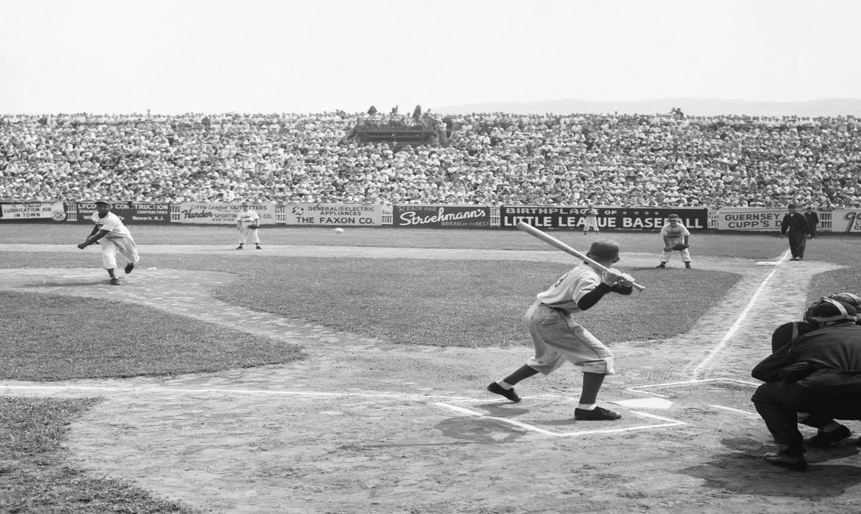Get our exclusive report. Download the iSport360 Club Switching Report Here – For Club Admins, Rec Leaders and Coaches.
Century of Youth Sports: Tracing the History in the United States
 Youth sports have long been an integral part of American culture. Sports offer countless children the opportunity to engage in physical activity, learn valuable life skills, and form lasting friendships. The history of youth sports in the United States is a story of growth, evolution, and the enduring importance of play. Let’s walk through the journey through the past century to explore the fascinating evolution of youth sports in the United States.
Youth sports have long been an integral part of American culture. Sports offer countless children the opportunity to engage in physical activity, learn valuable life skills, and form lasting friendships. The history of youth sports in the United States is a story of growth, evolution, and the enduring importance of play. Let’s walk through the journey through the past century to explore the fascinating evolution of youth sports in the United States.
Early 20th Century: Humble Beginnings
At the turn of the 20th century, organized youth sports in the United States were still in their infancy. Informal games like stickball, tag, and hopscotch were common pastimes for children. Schools and community centers began to introduce structured sports programs, primarily focused on physical fitness.
1920s-1930s: The Rise of School Sports
The 1920s and 1930s witnessed the emergence of school-based youth sports programs. Interscholastic sports, particularly football, baseball, and basketball, gained popularity. The development of high school sports associations and governing bodies formalized rules and schedules, leading to a more organized and competitive landscape.
1940s-1950s: Post-War Expansion
Following World War II, youth sports experienced significant expansion. The Baby Boomer generation brought an influx of children into schools and communities. The development of Little League Baseball in 1939 marked a turning point, setting the stage for the organized participation of millions of young athletes across the nation.
1960s-1970s: Civil Rights and Title IX
The 1960s and 1970s were marked by social change and progress in the world of youth sports. The Civil Rights Movement brought attention to racial inequality in sports, leading to efforts to desegregate teams and provide equal opportunities for all. In 1972, the passage of Title IX was a monumental moment, prohibiting gender-based discrimination in educational programs, including sports. This legislation opened doors for female athletes and led to the rapid growth of girls’ sports.
1980s-1990s: Competition and Commercialization
The 1980s and 1990s saw a surge in the competitiveness of youth sports. Travel teams, private coaching, and specialization became more common as parents sought to give their children a competitive edge. The commercialization of youth sports also accelerated, with the rise of sports apparel, equipment, and lucrative sponsorship deals.
2000s-Present: Concerns and Challenges
As we move into the 21st century, youth sports in the United States face both opportunities and challenges. While the growth of sports specialization continues, concerns have arisen about overuse injuries, burnout, and the exclusion of less affluent families from elite programs. Additionally, the rise of digital entertainment has led to concerns about declining participation rates among children.
What is important in Youth Sports?
In recent years, efforts have been made to address these challenges. Organizations like the Aspen Institute’s Project Play have advocated for a return to multi-sport participation, emphasizing the importance of physical activity for all children. Schools and communities have also promoted inclusivity, ensuring that youth sports are accessible to a diverse range of participants.
The Future of Youth Sports
The history of youth sports in the United States reflects a constant evolution driven by societal changes, technological advances, and a growing understanding of the benefits of sports participation for children. Looking to the future, several trends and challenges are likely to shape youth sports:
Inclusivity:
Efforts to make youth sports accessible to children of all backgrounds will continue to be a priority, with a focus on addressing socioeconomic disparities.
Specialization Debate:
The debate over sports specialization will persist, with more emphasis on balanced, multi-sport participation for overall physical development.
Technology Integration:
Technology will play an increasingly significant role in youth sports, with the use of data analytics, wearable devices, and virtual coaching becoming more common.
Mental Health Awareness:
The recognition of the importance of mental health in youth sports will grow, leading to increased support for young athletes’ psychological well-being.
The history of youth sports in the United States is a testament to the enduring value of play and physical activity in the lives of children. From humble beginnings to the complex landscape of today, youth sports have evolved to reflect the changing needs and aspirations of young athletes.
As we continue into the 21st century, it is essential to prioritize inclusivity, physical well-being, and the development of life skills, ensuring that youth sports remain a source of joy, growth, and opportunity for generations to come.
iSport360 is the only app that does it all for youth sports. For more information on what we do, click here. For more posts about the history of youth sports, click here.
About the author:
Amy Masters is a sports mom, coach and club administrator. She has been coaching youth sports for more than 10 years. She started Jr Lions Field Hockey, the youth recreation program for the Hunterdon County community growing it from 40 players in year 1 to 150 players by year 3. A few years later, she saw the love and competitiveness grow then started Omega Field Hockey Club serving NJ and PA players. Prior to coaching, she was a collegiate field hockey player for Lock Haven University. In her spare time (lol), she is head of marketing for iSport360, where she brings her love of sports to a bigger audience.
Learn more or request a demo of our youth sports software that is helping teams improve communication, organization and player development.
September 25, 2023






